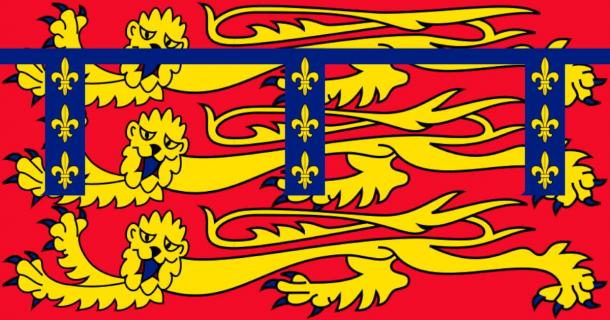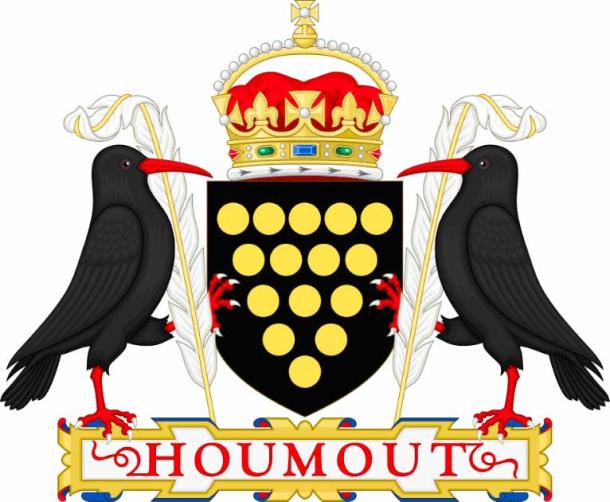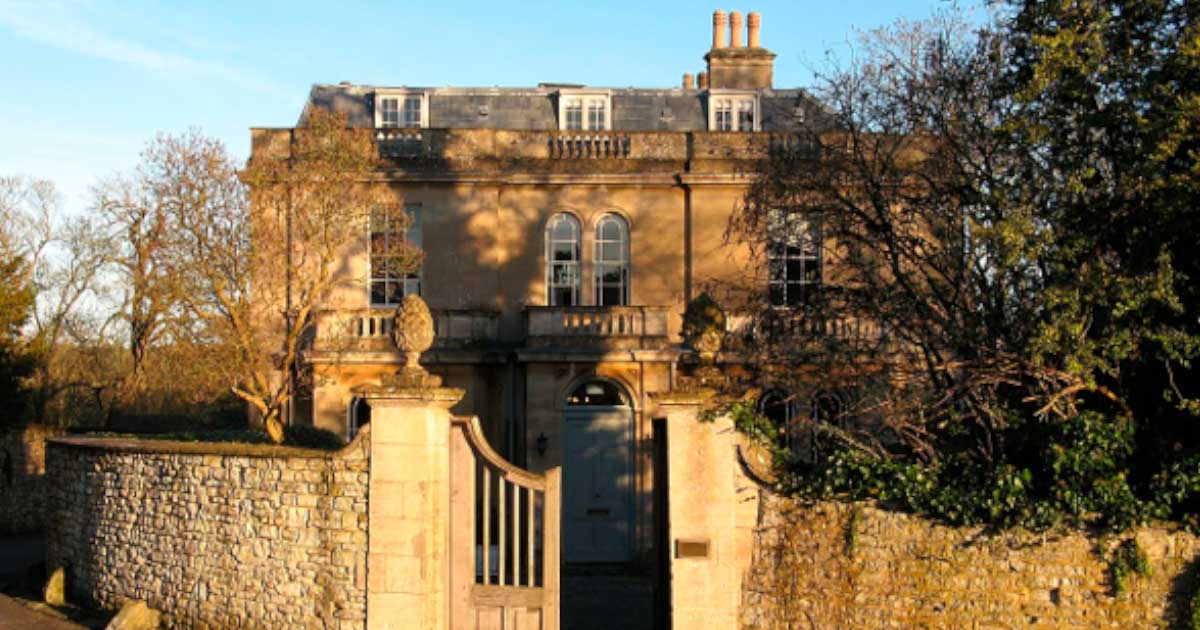Prince William Inherits Ancient Duchy of Cornwall Estate Worth $1.2billion!
With Britain’s longest reigning monarch, Queen Elizabeth II, passing last week, most of the Royal Estates passed to the next sovereign, King Charles III. However, the line of succession ensures that as the new Prince of Wales and Duke of Cornwall and Cambridge, Prince William, is now keeper of the sprawling estate of the Duchy of Cornwall. Created in 1337 by King Edward III, the Dutchy of Cornwall was estimated to be worth a whopping $1.2billion or a £1billion last year when it belonged to the previous Prince of Wales, who is now king.
Today, the Prince of Wales’ Duchy of Cornwall comprises 135,000 acres (55,000 hectares) including 18,710 acres (7,571 hectares) of land in Cornwall, almost all of the Isles of Scilly, Dartmoor in Devon, other large holdings in Herefordshire and Somerset, as well as the Duchy’s portfolio of financial investments.

This portion of a large farm in the Windsor area of the UK is part of the Crown Estate, as are the separate Duchy of Cornwall and the Duchy of Lancaster. Crown Estate farmland near Cranbourn Tower. (Andrew Smith / Crown Estate farmland, Windsor)
The Duchy of Cornwall: A Crown Estate That Stands Apart
The British monarchy’s vast assets fall into several categories. Most of these assets are owned by the Crown, which is to say that they belong to the reigning monarch but are not their private property. These include the Royal residences and the Crown Estate. Buckingham Palace, Windsor Castle, and Holyrood Palace are also on the Crown’s list of assets.
The $19 billion or £16.5 billion Crown Estate forms the largest chunk of the monarchy’s fortune, according to CNN Business. The income from the Estate used to belong entirely to the reigning sovereign. But by an arrangement arrived at in 1760, it is now incumbent upon the ruler to hand over the profits from the Estate to the government. In return they receive a slice of it called the Sovereign Grant, reported ET.
- Why is William’s New Prince of Wales Title So Significant?
- Queen Elizabeth II, the Second Longest-Reigning Monarch in History, Dies
The Crown Estate is an independent corporation created by an act of parliament. It owns vast properties in central London and large swathes of the seabed in England, Wales, and Northern Ireland. It is managed by a chief executive and commissioners appointed by the monarch on the recommendation of the prime minister.
The Sovereign Grant usually amounts to 15 percent of the Estate’s profits. Though this ratio is determined by the UK government and is not fixed, according to CTV News. In 2017, for example, it was raised to 25 percent for a decade to meet the costs of refurbishing Buckingham Palace. Last year profits from the Crown Estate amounted to 361 million dollars (£313 million). Of this, a Sovereign Grant amounting to 100 million dollars (£86 million) was paid to the Queen by the UK Treasury.
The Sovereign Grant is primarily used for the upkeep of the royal family properties, staff salaries, and royal engagement expenses. It is not for the personal use of the monarch.

The coat of arms of the Duchy of Lancaster. (Yaddah / Public domain)
The Royal family also owns the Duchies of Cornwall and Lancaster, which are deemed “special" private estates. This means, in a nutshell, that the current owner of the Duchy of Cornwall, Prince William doesn’t have to pay tax, although both duchies have voluntarily paid income tax since 1993. However, there are restrictions on the ownership of the Dutchy of Cornwall and the Duchy of Lancaster.
Upon her passing, the Queen had personal wealth estimated by Forbes last year to be worth 500 million dollars (£436 million). This includes her jewels, art collection, a valuable stamp collection, investments, and two residences, Balmoral Castle in Scotland and Sandringham House in Norfolk. Both the residences were inherited by the Queen from her father King George VI.
These are personal assets, and they will be dispersed according to the late Queen’s official will. However, apart from the residences whose new ownership will be announced, the other bequeathals are not likely to be made public. As Laura Clancy, a lecturer in media at Lancaster University and author of a book on royal finances, told CNN Business, “[Royal wills] are hidden, so we have no idea actually what's in them and what that's worth, and that's never ever made public.”

The coat of arms of the Duchy of Cornwall. (Sodacan / CC BY-SA 4.0)
The Private Duchies
The Duchies of Lancaster and Cornwall are private estates of the British royal family. Traditionally, the Duchy of Lancaster is held by the reigning monarch and the Duchy of Cornwall by the heir to the throne, or failing one, the monarch himself or herself.
The Duchy of Lancaster was established in 1265 and its latest valuation in March 2022 was roughly 765 million dollars (£665 million), according to The Guardian. Income from this Duchy covers expenses not met by the Sovereign Grant and helps to support other Royal family members.
The Duchy of Cornwall passes to the heir who succeeds to the title of Duke of Cornwall. The duchy owns a vast portfolio of land and property, most of it in southwest England. It was created by King Edward III in 1337.
According to its website, the revenue generated by the estate is “used to fund the public, private and charitable activities” of the Duke of Cornwall. However, the two Duchies are considered private property of the Royals and beyond reporting their income, they are not required to give any details of how it is spent.
- King Charles III: What’s in a Name? More Than You Think
- St. Edward’s Crown to Be Worn Again at King Charles III’s Coronation
This does not mean that no restrictions apply. Neither Royal is entitled to any proceeds from capital sales from sales of assets in their Duchy. Any profit from sales is ploughed back into the estate.
Neither Duchy is liable to income tax, but both have voluntarily paid income tax since 1993. A public outcry after the Royal family planned to use public money to repair Windsor Castle that had been damaged in a fire likely forced their hand, Clancy told CNN Business.
However, since voluntary income tax is not paid at a fixed rate, the Duchy of Cornwall is likely to be a very profitable source of income for Prince William. Last year, for example, King Charles, then the Duke of Cornwall, paid himself 25 million dollars (£21 million) from the Duchy of Cornwall estate.
Top image: The Duchy of Cornwall office in The Old Rectory, Newton St Loe, Bath, England is home to the centralized finance and property teams and members who manage the commercial property portfolio, the development sites, and the estates belonging to the Duchy. Source: Rwendland / CC BY-SA 3.0
By Sahir Pandey
References
Cooban, A. 2022. Prince William just inherited a 685-year-old estate worth $1 billion. Available at: https://edition.cnn.com/2022/09/13/business/prince-william-1-billion-inheritance/index.html
Partridge, A. 2022. The sovereign’s wealth: UK royal family’s finances – explained. Available at: https://www.theguardian.com/uk-news/2022/sep/14/the-sovereigns-wealth-uk-royal-familys-finances-explained
Sachdeva, R. 2022. Queen Elizabeth II's estate estimated at $657 million, here's who could share the fortune. Available at: https://www.ctvnews.ca/world/queen-elizabeth-ii-s-estate-estimated-at-657-million-here-s-who-could-share-the-fortune-1.6068338
Schillaci, S. 2022. Prince William Inherits Ancient Estate Worth $1 Billion Following Death of Queen Elizabeth. Available at: https://www.etonline.com/prince-william-inherits-ancient-estate-worth-1-billion-following-death-of-queen-elizabeth-190846




















Comments
RE: “The Sovereign Grant is primarily used for the upkeep of the royal family properties, staff salaries, and royal engagement expenses. It is not for the personal use of the monarch.”
The scond sentence contradicts the first. It pays for their lifestyles.
The Battenbergs like to pass things on, including names. Will's younger innocent son is named after Philip's Uncie 'Dickie', the grandfather Charles never had. Uncle Dickie's fondness for boys is a matter of history. The FBI had a file on the subject in the 1940s. Philip visited Bohemian Grove, a playground of Republican Presidents such as Nixon and Reagan, in California in his forties. The real history is out there. However, many history lovers have no real interest in the truth, for it can be far too confronting to overturn long-ingrained propaganda.
Big inheritances can make the commoners somewhat unsettled.
Nobody gets paid to tell the truth.